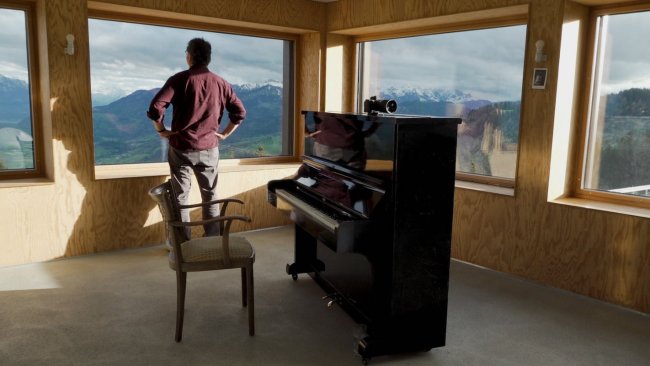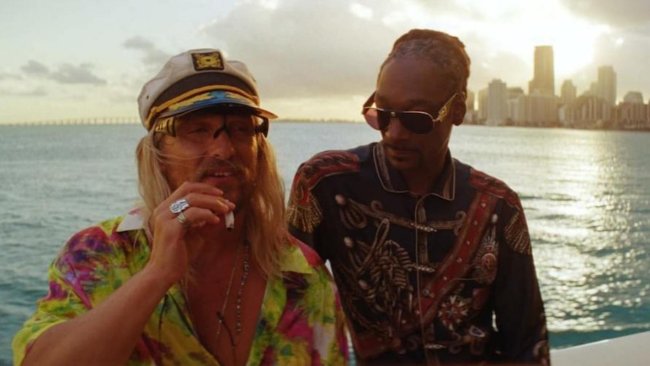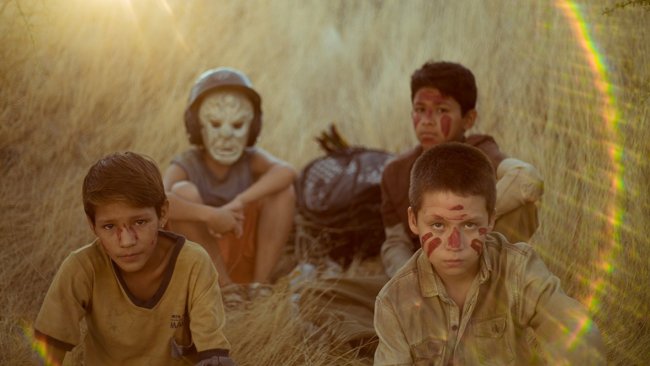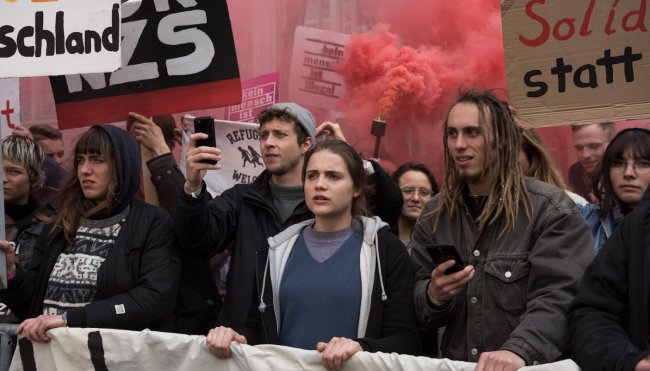Did You Wonder Who Fired the Gun?
[…] His investigation is nothing less than an introspective journey into his own family's history and his origins, while our informative trek into the past and present of Alabama becomes a psychological exploration of confession and guilt, accusation and grief, one that spans the generations.
[…] The racial discrimination involves also the keeping of memories of the past, of finding the remaining traces of that past: Wilkerson's inquiry therefore becomes an attempt to find justice - at least on an historical level.
[…] The quest to track down the ghosts of old evils transforms itself - the hunter becomes the quarry, pursued by the evils of real persons today.
Text: Giuseppe Di Salvatore

«Say his name!» – we hear these words sung repeatedly as a refrain during Travis Wilkerson’s documentary essay. The names are those of the black victims of unpunished murders in the States, amongst which the central one for this film is the name Bill Spann, a black man who was murdered in 1946 by the great-grandfather of the filmmaker. Did You Wonder Who Fired the Gun? is constructed as an inquiry into an event that could easily now sink into oblivion; an event that still distresses Wilkerson’s soul and preys on his conscience. For once, we are not only watching an objective documentary on the racial issues in the immediate post-WW2 United States; the filmic narrative is told in the first person – we will tend to assume Wilkerson’s perspective, thus placing us on the side of the murderers and not their victim. His investigation is nothing less than an introspective journey into his own family’s history and his origins, while our informative trek into the past and present of Alabama becomes a psychological exploration of confession and guilt, accusation and grief, one that spans the generations.
Wilkerson’s inquiry is not only important for his own personal identity, but also because the history of this crime, like many other cold cases, seems to fade rapidly over time. The racial discrimination involves also the keeping of memories of the past, of finding the remaining traces of that past: Wilkerson’s inquiry therefore becomes an attempt to find justice – at least on an historical level. His four years of research are constantly shrouded in ambiguity and lack of clarity; the specific event concerning S.E. Branch (Wilkerson’s great-grandfather) and Bill Spann is surrounded by an almost-impenetrable fog of uncertainty. This is why only other events in the county and in Alabama state can throw light on the specific crime that concerns his family; only history can determine the truth of the individual deeds. The cloud fades to shed light on a dark and key part of American history.
If only it were just an historical affair! But the difficulties experienced during the filmmaker’s inquiries are largely caused by an obstructive wall of silence, which then evolves with indirect and even explicit threats to his person; then by the discovery of a present-day organised group of racist segregationists, within which his own aunt is one of the most fervent activists. Wilkerson discovers that his great-grandfather’s legacy is still very much alive in his family, and the fanatical (or merely closed-minded) discourses of that kind of people elicit the most painful and burning outcomes of his inquiries. The quest to track down the ghosts of old evils transforms itself – the hunter becomes the quarry, pursued by the evils of real persons today.
«Two families have lived in Alabama. One of them, the white one, is the family of the murderer; the other, the black one, is the family of the murdered». Three times the filmmaker reiterates a sentence along these lines; each time it is complemented by further reflection: this is not only the distinction between rich and poor. It is more specifically the contrasting distinction between who is filming and who is filmed, between the act of filming and the fact of being filmed. Wilkerson explicitly assigns to his own filmmaking the responsibility of expressing what I would call the “shooting attitude” – whether by the gun or the camera. The self-reflective dimension of this movie is articulate and complex: from the opening sequences, the cinema is present through the celebrated film To Kill a Mockingbird (1962), which is employed as a vehicle to convey a new awareness of the racial problem in the States. However, the film (specifically through the use of old family home movies) is equally effective at presenting the white (and rich) class as the winning, happy and triumphant society.
It is probably this that pushes Wilkerson to approach his own filmmaking so self-critically, and this contributes to the decision to exploit a particularly fragmented style of narrative. The voice-over that is his own voice works effectively as the binding element of the film; the sole non-fragmentary piece of the complex puzzle that is his investigation. While it may be a pleasant enough voice for the narration, its depressed monotonality diminishes its overall effect. It feels to me to be the only real shortcoming of the film, especially considering that the power of the film’s subject matter already suffices to present the full drama of the situation. However, and notwithstanding the limitations of the voice-over, the remaining components of the work are not simply accompanying and supporting the narration, they are ultimately fundamental to our reception of the film. The musical accompaniment, with its strong geographical and historical origins, communicates potently the strongly-held beliefs of those on both sides of the racial divide. Meanwhile, the visual layer develops atmospheric continuity through the use of archive footage and contemporary scenes that are filmed in black-and-white. Additionally, the exploitation of diverse cinematic techniques during the editing process (black screens, white screens, historic leaps between past and present, “jazzy” repetitions, etc.) and within the on-screen image itself (multiple frames, text superimpositions, overlapped images, half-filtered colours) combine effectively to reveal a meaningful process of fragmentation and reconstruction which is absolutely fundamental to the dramaturgy of Did You Wonder Who Fired the Gun?.
The final revelation of the truth is accompanied by a very long shot depicting a road in Alabama. Or at least, it accompanies that part of the truth that is unveiled at the conclusion of the inquiry and at the end of the film. This particular Alabama road is also significant – it was the very scene of an infamous crime (inevitably committed against a black person, a political activist). In this connection between the road and the crime, I perceive an original way of melding together two of the main themes of the American cinema. And yet… here the destiny of the road is not discovery and freedom; the pioneering American rhetoric reveals now its deepest and persistent truth: that of racial discrimination and racist crime.
This article contains a third-party video. If you would like to watch the video, please adjust your settings.
Watch
Info
Did You Wonder Who Fired the Gun? | Film | Travis Wilkerson | USA 2017 | 90’ | Locarno Festival 2017, Kino Xenix Zurich, Cinémathèque suisse Lausanne
First published: March 20, 2018



